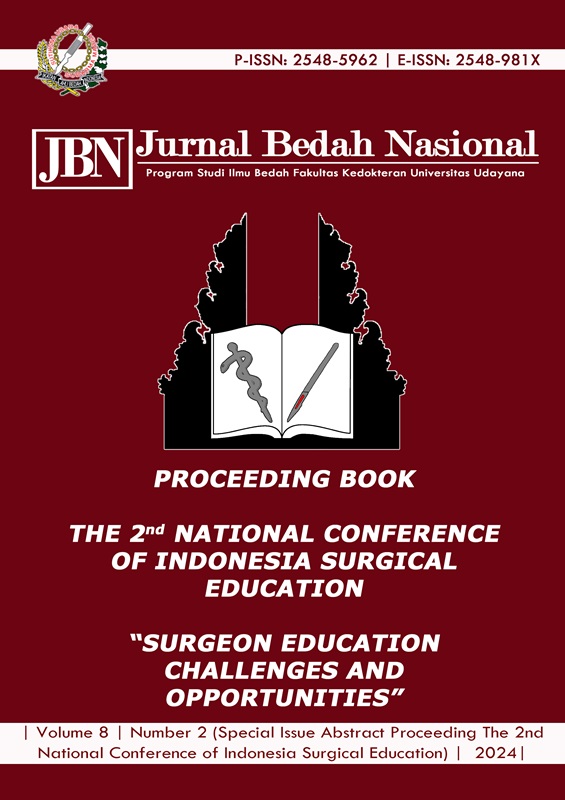023. Isolated Calvarial Tuberculosis in An Immunocompromised Patient: A Case Report
Abstract
Background: Isolated Calvarial tuberculosis is a rare occurrence, first reported by Reid in 1842, with majority of cases (75-90%) appearing under the age group of 20-30 years and involving frontal and parietal bones because of the greater amount of cancellous bone with diploic channels. The Human Immunodeficiency Virus (HIV) Infection is currently a huge threat to Indonesia, with Tuberculosis (TB) infection is one example of opportunistic infection that can lead to death in People living with HIV. The objective of this article is to report a rare case of Isolated Calvarial Tuberculosis in an Immunocompromised Patient Case: A 26-year-old male, known to be immunocompromised with HIV infection, presented to hospital with chief complaint of a painless lump on the left temple since 1 month prior. Head CT-Scan examination revealed osteolytic appearance in the left frontal area and swelling of the surrounding soft tissue. The patient then underwent surgery with intraoperative findings of a cystic mass filled with yellowish fluid. A craniotomy of the surrounding healthy bone including the dura mater and excision of the overlying soft tissue were performed, and histopathological result revealed a chronic tuberculosis inflammation. Conclusion: Calvarial Tuberculosis is a rare form of skeletal tuberculosis occurring in younger population, but can also present in older patient with immunocompromised state, that present with main complaint of painless swelling or lump in the frontal or parietal area because of its favourable bone structure. Diagnostic including X-ray and CT-Scan with microbiologic findings of multiple epithelioid granulomas with Langerhans type giant cells. Preferred treatment including both surgical and antituberculosis therapy to achieve favourable outcome.
Downloads

This work is licensed under a Creative Commons Attribution 4.0 International License.
Program Studi Ilmu Bedah Fakultas Kedokteran Universitas Udayana. 
This work is licensed under a Creative Commons Attribution 4.0 International License.






